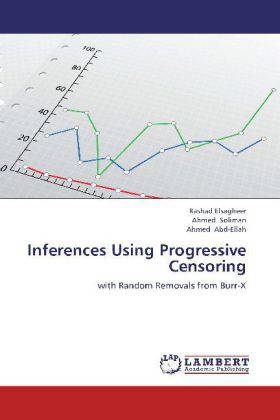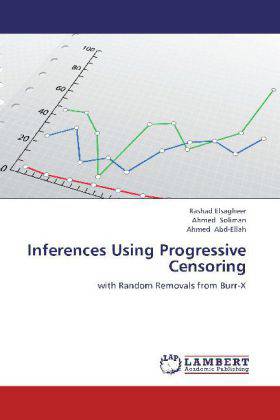
Je cadeautjes zeker op tijd in huis hebben voor de feestdagen? Kom langs in onze winkels en vind het perfecte geschenk!
- Afhalen na 1 uur in een winkel met voorraad
- Gratis thuislevering in België vanaf € 30
- Ruim aanbod met 7 miljoen producten
Je cadeautjes zeker op tijd in huis hebben voor de feestdagen? Kom langs in onze winkels en vind het perfecte geschenk!
- Afhalen na 1 uur in een winkel met voorraad
- Gratis thuislevering in België vanaf € 30
- Ruim aanbod met 7 miljoen producten
Zoeken
Inferences Using Progressive Censoring
with Random Removals from Burr-X
Rashad EL-Sagheer, Ahmed Soliman, Ahmed Abd-Ellah
Paperback | Engels
€ 63,45
+ 126 punten
Omschrijving
Censored sampling arises in a life testing experiment whenever the experimenter does not observe the failure times of all items placed on a life test. Progressive censoring scheme is useful in both industrial life testing applications and clinical settings; it allows the removal of surviving experimental units before the termination of the test. In this book, we obtain the maximum likelihood, and Bayes estimations for the parameter of the Burr-X model as well as the binomial parameter, based on progressive first-failure censoring with binomial removals. Bayes estimators under symmetric and asymmetric loss functions are obtained. Three special cases from this censoring scheme have been considered. Farther, we discuss the problem of predicting future record values and ordinary order statistics from Burr-X model based on progressively type-II censored with random removals, were the number of units removed at each failure time has a discrete binomial distribution. We use the Bayes procedure to derive both point and interval prediction. The maximum likelihood prediction both point and interval using "plug-in" procedure for future record values and ordinary order statistics are derived.
Specificaties
Betrokkenen
- Auteur(s):
- Uitgeverij:
Inhoud
- Aantal bladzijden:
- 116
- Taal:
- Engels
Eigenschappen
- Productcode (EAN):
- 9783847319368
- Verschijningsdatum:
- 13/12/2012
- Uitvoering:
- Paperback
- Afmetingen:
- 150 mm x 220 mm
- Gewicht:
- 181 g

Alleen bij Standaard Boekhandel
+ 126 punten op je klantenkaart van Standaard Boekhandel
Beoordelingen
We publiceren alleen reviews die voldoen aan de voorwaarden voor reviews. Bekijk onze voorwaarden voor reviews.









